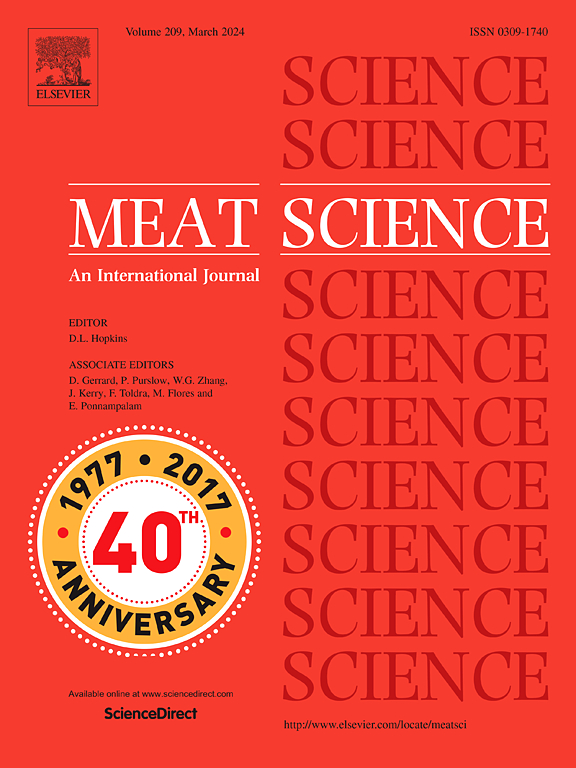Meat phenomics: A novel concern linking meat across the whole chain
IF 7.1
1区 农林科学
Q1 Agricultural and Biological Sciences
引用次数: 0
Abstract
Genetic and environmental factors jointly determine the biological characteristics of muscle and connective tissue. These measurable physical, chemical, and biological traits are, in fact, also the determinants of meat eating quality and serve as important references for the study in meat animal production from quantity to quality. Therefore, the integration of high-throughput and multi-dimensional meat quality parameters with clear biological foundations will provide excellent targets for consuming-oriented molecular breeding and precision husbandry research. Here, we introduce a novel concept, meat phenomics, to define this set of quantitative indicators with a well-defined genetic basis. These indicators encompass both external attributes, such as meat color and tenderness, and internal biomolecular qualities and quantities, including myoglobin and fatty acids. By clarifying the relationships between meat phenotypes and genotypes, it is convincing that meat phenomics should be recognized as an independent discipline to provide scientific and standardized data. This will promote the synergistic development of food science and animal husbandry to produce higher-quality meat. Benefiting from the extensive genetic and sample repositories of livestock and poultry, the functions of more gene structures and variants are anticipated to be elucidated in the future. By interpreting the interrelationships among gene polymorphisms, expression regulation, and phenotypes, meat phenomics can also provide valuable materials for broader life science investigations.
肉类表型学:一种新颖的关注,将整个肉类链联系起来
遗传和环境因素共同决定了肌肉和结缔组织的生物学特性。这些可测量的物理、化学和生物学性状实际上也是肉品质的决定因素,是肉品动物生产从数量到质量研究的重要参考。因此,整合具有明确生物学基础的高通量、多维度肉质参数,将为面向消费的分子育种和精准畜牧业研究提供极好的靶点。在这里,我们引入了一个新的概念,肉表型组学,来定义这一套定量指标与明确的遗传基础。这些指标既包括外部属性,如肉的颜色和嫩度,也包括内部生物分子质量和数量,包括肌红蛋白和脂肪酸。通过澄清肉类表型与基因型之间的关系,有理由将肉类表型组学视为一门独立的学科,以提供科学、规范的数据。这将促进食品科学和畜牧业的协同发展,生产出更高品质的肉类。得益于畜禽广泛的遗传和样本库,更多的基因结构和变异的功能有望在未来得到阐明。通过解释基因多态性、表达调控和表型之间的相互关系,肉表型组学也可以为更广泛的生命科学研究提供有价值的材料。
本文章由计算机程序翻译,如有差异,请以英文原文为准。
求助全文
约1分钟内获得全文
求助全文
来源期刊

Meat Science
工程技术-食品科技
CiteScore
12.60
自引率
9.90%
发文量
282
审稿时长
60 days
期刊介绍:
The aim of Meat Science is to serve as a suitable platform for the dissemination of interdisciplinary and international knowledge on all factors influencing the properties of meat. While the journal primarily focuses on the flesh of mammals, contributions related to poultry will be considered if they enhance the overall understanding of the relationship between muscle nature and meat quality post mortem. Additionally, papers on large birds (e.g., emus, ostriches) as well as wild-captured mammals and crocodiles will be welcomed.
 求助内容:
求助内容: 应助结果提醒方式:
应助结果提醒方式:


